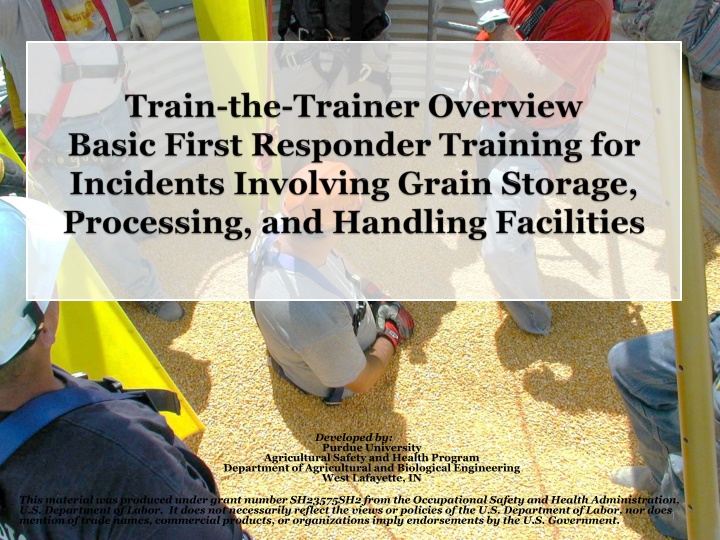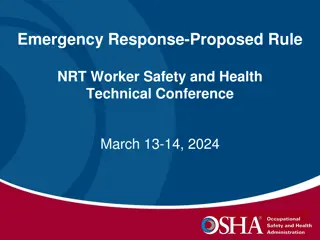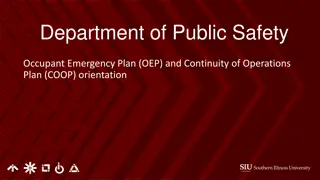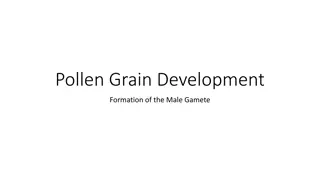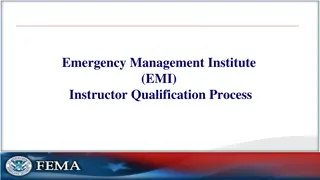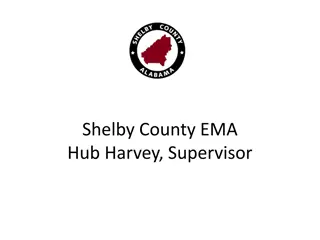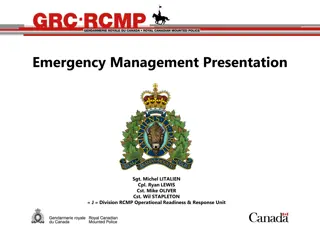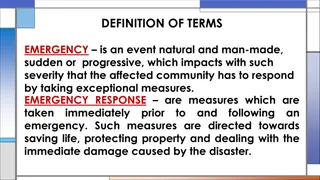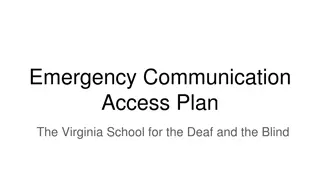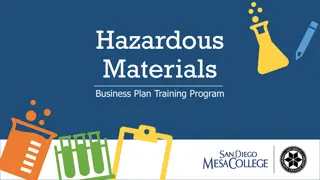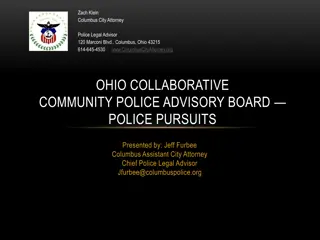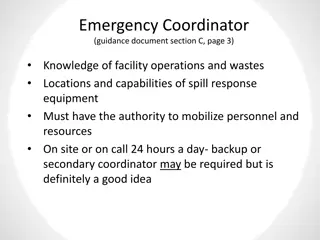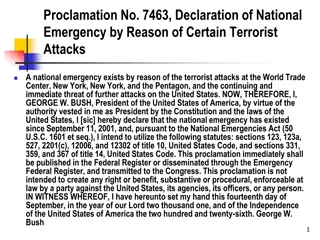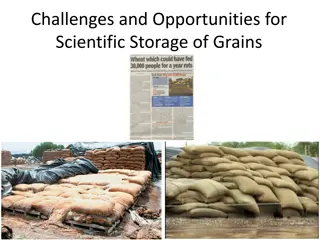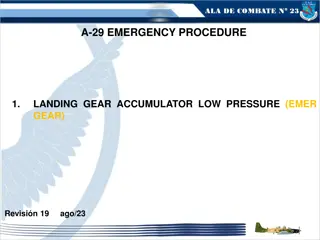Instructor Training for Grain Emergency Response
This material, developed by Purdue University, focuses on preparing instructors to teach evidence-based first responder training for emergencies at grain storage, processing, and handling facilities. It covers instructor qualifications, training objectives, strategies, and desired outcomes to enhance the safety and effectiveness of responses to incidents in the agricultural sector.
Download Presentation

Please find below an Image/Link to download the presentation.
The content on the website is provided AS IS for your information and personal use only. It may not be sold, licensed, or shared on other websites without obtaining consent from the author.If you encounter any issues during the download, it is possible that the publisher has removed the file from their server.
You are allowed to download the files provided on this website for personal or commercial use, subject to the condition that they are used lawfully. All files are the property of their respective owners.
The content on the website is provided AS IS for your information and personal use only. It may not be sold, licensed, or shared on other websites without obtaining consent from the author.
E N D
Presentation Transcript
Developed by: Purdue University Agricultural Safety and Health Program Department of Agricultural and Biological Engineering West Lafayette, IN This material was produced under grant number SH23575SH2 from the Occupational Safety and Health Administration, U.S. Department of Labor. It does not necessarily reflect the views or policies of the U.S. Department of Labor, nor does mention of trade names, commercial products, or organizations imply endorsements by the U.S. Government. 1
Overview and Introductions Scene of grain rescue class 2
Recommended Instructor Qualifications Be a current first responder instructor Prior completion of NIMS training Working knowledge of grain storage, transport, processing, and handling facilities and equipment Prior completion of first responder training related to grain storage, processing, and handling Familiarity with relevant OSHA Standards Familiarity with NFPA 1670 and 1006 3
Objectives of Instructor Training Explain goals and objectives of Basic First Responder Training Curriculum Explain and review teaching resources included in curriculum Review strategies to plan, promote, and conduct an evidence-based workshop using the Basic First Responder Training Curriculum Identify potential hazards to first responders at grain-related incidents Explain the need for OSHA compliance when required Describe basic rescue equipment needed for responding to grain- related incident Explain basic first response strategies Affirm the importance of conducting a class evaluation and assessment of student learning Identify and locate supplemental teaching resources 4
Desired Outcomes of Instructor Training Increase the number of instructors teaching evidence based first responder training related to emergencies at grain storage, processing, and handling facilities Increase the number of first responders trained to safely and effectively respond to incidents at grain storage, processing, and handling facilities Increase the probability of successful response Ensure greater compliance with relevant OSHA workplace safety and health regulations Reduce the probability of secondary victims and injuries 5
Fair Use of the Curriculum Developed with U.S. Department of Labor funding Contents are for public use Can only be used for non-profit purposes Cannot be repackaged for sale 6
Instructor Training Agenda Introductions, Pre-Test, and Training Overview Unit 1: Confined Spaces in Agriculture Definitions/key terms Types of confined spaces found in agriculture Relevant OSHA Standards Hazards related to agricultural confined spaces OSHA exempt vs. non-exempt facilities Overview of facilities used to transport, handle, and store grain Augers and other energized equipment Role of out-of-condition grain Importance of preplanning Break Unit 2: Summary of Emergencies at Grain Storage and Handling Facilities Definitions Frequency of problem Contributing factors Nature and characteristics of free flowing grain Common categories of flowing grain/feed entrapments and engulfments Entanglements Asphyxiations Falls Electrocutions 7
Instructor Training Agenda Unit 3: Preplanning/Training/Rescue Equipment Components of preplanning Role of training Personal protective equipment Rescue equipment Grain handling equipment Grain containment systems Unit 4: Emergency Response Strategies Importance of rapid response Potential hazards to first responders First steps in responding Review of key rescue equipment that would be beneficial Identifying appropriate and inappropriate anchor points Types of injuries victims may experience Techniques for rapid removal of grain Potential for structure failure during rapid removal Lunch (Video Presentation) Overview of Demonstrations and Hands-on Exercises Break up into teams Assign safety officer for each team Unit 5: Demonstrations and Hands-on Exercises Group tour of grain safety and handling facility Group review of activities Q&A, Post-test, and Training Evaluation 8
